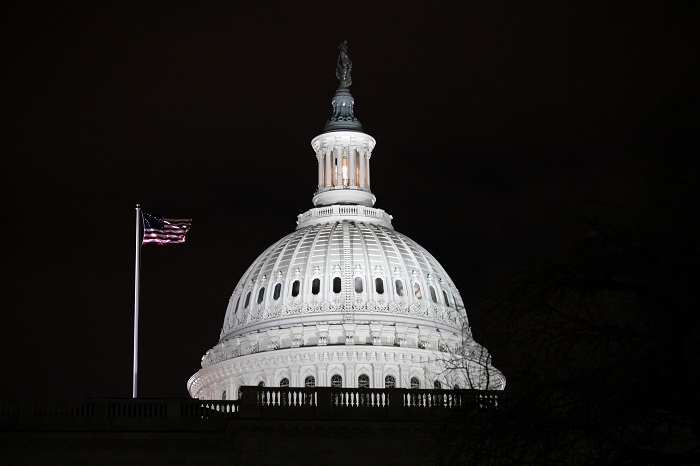The Internal Revenue Service and the Treasury Department released
The rules aim to increase investment in clean energy technologies by making tax incentives transferable between project developers and investors. The Inflation Reduction Act created two new credit delivery mechanisms — elective pay (otherwise known as “direct pay”) and transferability — that allow state, local and tribal governments; nonprofit organizations; Puerto Rico and other U.S. territories; and other businesses to leverage clean energy tax credits. Until the Inflation Reduction Act introduced these new credit delivery mechanisms, governments, many types of tax-exempt organizations, and many businesses couldn’t fully utilize tax credits like those that incentivize clean energy construction. The 2022 law has spurred development of energy tax credit exchanges. Some of the incentives were already available to businesses under the CHIPS and Science Act of 2022.
“The Inflation Reduction Act’s new tools to access clean energy tax credits are a catalyst for meeting President Biden’s historic economic and climate goals,” said Treasury Secretary Janet Yellen in a statement. “They are acting as a force multiplier, enabling companies to realize far greater value from incentives to deploy new clean power and manufacture clean energy components. More clean energy projects are being built quickly and affordably, and more communities are benefitting from the growth of the clean energy economy.”
Ting Shen/Bloomberg
The Inflation Reduction Act and the Creating Helpful Incentives to Produce Semiconductors (CHIPS) Act allow taxpayers to take advantage of some of manufacturing investment, clean energy investment and production tax credits through elective pay or transfer provisions. For tax years starting after Dec. 31, 2022, eligible taxpayers can opt to transfer all or part of eligible credits to unrelated taxpayers for cash payments.
The unrelated taxpayers are then permitted to claim the transferred credits on their tax returns. The cash payments aren’t included in gross income of the eligible taxpayers and aren’t deductible by the unrelated taxpayers.
The final regs also include special rules related to excessive credit transfers and recapture events, including rules for determining whether an event has occurred, the resulting tax impact and the person responsible for that tax impact.
The final regulations also provide rules for a mandatory IRS pre-filing registration process through an electronic portal. The pre-filing registration process needs to be completed, and a registration number received, before making an election to transfer eligible credits. In addition, the final regulations describe specific rules for partnerships and S corporations as eligible taxpayers and transferee taxpayers.
The Inflation Reduction Act’s transferability provisions allow businesses to transfer all or part any of 11 clean energy credits to a third-party in exchange for tax-free immediate funds, so businesses can take advantage of tax incentives if they don’t have sufficient tax liability to fully utilize the credits themselves. Entities without sufficient tax liability were previously unable to realize the full value of credits, which raised costs and created challenges for financing projects.
The Inflation Reduction Act also allows tax-exempt and governmental entities to receive elective payments for 12 clean energy tax credits, including the major investment and production tax credits, along with tax credits for electric vehicles and charging stations. Businesses can also choose elective pay for a five-year period for three of those credits: the credits for advanced manufacturing (45X), carbon oxide sequestration (45Q), and clean hydrogen (45V).
To help taxpayers with transferring a clean energy credit or receiving a direct payment of an energy credit or CHIPS credit, the IRS built IRS Energy Credits Online (ECO) for taxpayers to complete the pre-file registration process and receive a registration number. The registration number needs to be included on the taxpayer’s annual return when making a transfer election or elective payment election for a clean energy credit. The registration process helps deter improper payments to fraudsters and gives the IRS basic information so any taxpayer that qualifies for these credit monetization mechanisms can access these benefits when filing a return and making an election.
Previously, the IRS issued
As of April 19, over 900 entities have requested around 59,000 registration numbers for projects or facilities located across all 50 states plus territories. Approximately 97% of these projects are pursuing transferability. A wide variety of credits are being used, but most of the transferability-related registrations are related to solar and wind projects using the investment or production tax credit. More than 1,300 projects or facilities submitted are pursuing the elective pay mechanism, including submissions from more than 75 state and local governments to register approximately 650 clean buses and vehicles through elective pay.
The value of the tax credits for such projects isn’t determined during the pre-filing registration process but instead is determined after an entity files their tax return.
The number of registration number requests so far does not include cases where an entity has not yet formally requested a registration number, including those who may have work saved in progress in IRS ECO. Registration numbers, which accelerate return processing and help prevent improper payments, are being issued on a rolling basis. The IRS has already issued approximately 40,000 registration numbers.
Crux, a sustainable finance technology company that has been
The IRS confirmed in the final regulations that there are no restrictions on the ability of project owners to obtain loans — either from a tax credit buyer or a third party lender — secured by a tax credit sale agreement. The IRS reiterated that companies must get a pre-filing registration number in order to complete a tax credit transfer. While more than 45,000 projects have already submitted pre-registration filings, some commenters noted specific challenges faced by smaller projects, so technology will be crucial in streamlining this process.
“While a multiyear market for transferable tax credits is already well underway, the final guidance released today gives further clarity on this key tool for financing clean energy and manufacturing here in the U.S.,” said Crux CEO Alfred Johnson in a statement. “With these final rules set, we expect to see the market continue to accelerate rapidly.”
Crux currently works with over 100 partners and has over $8 billion in transferable tax credits listed on its platform.
Credit: Source link











